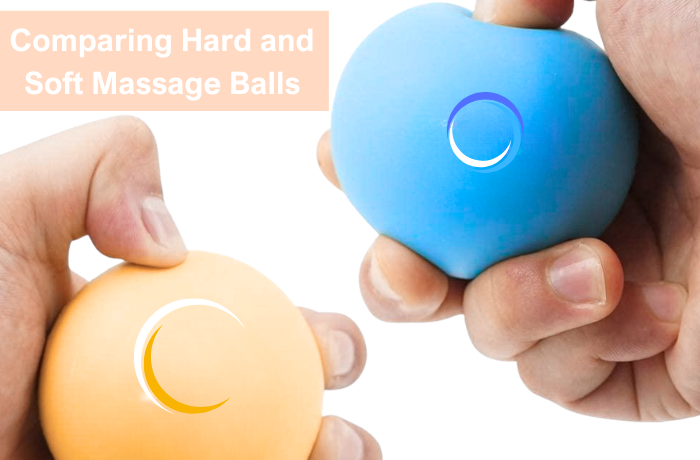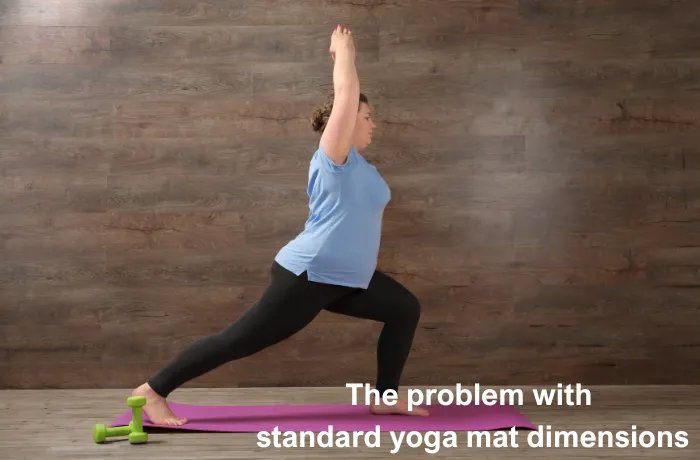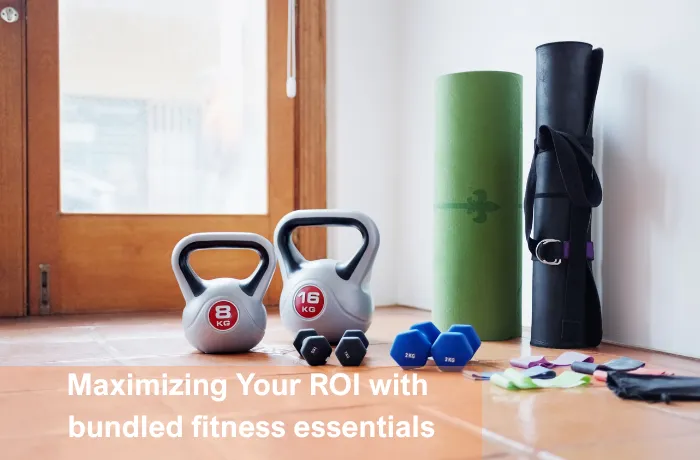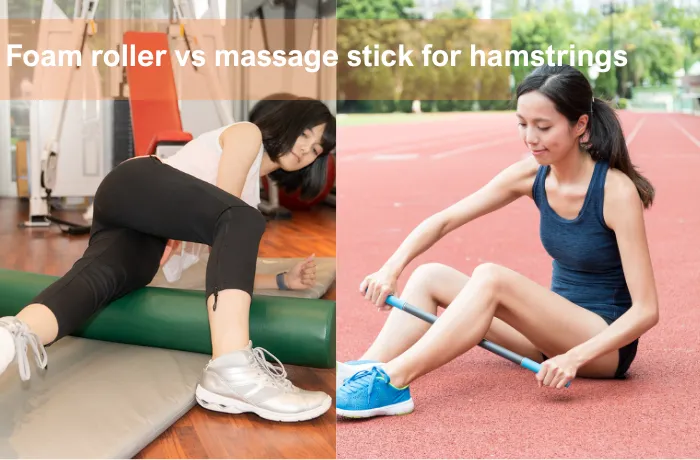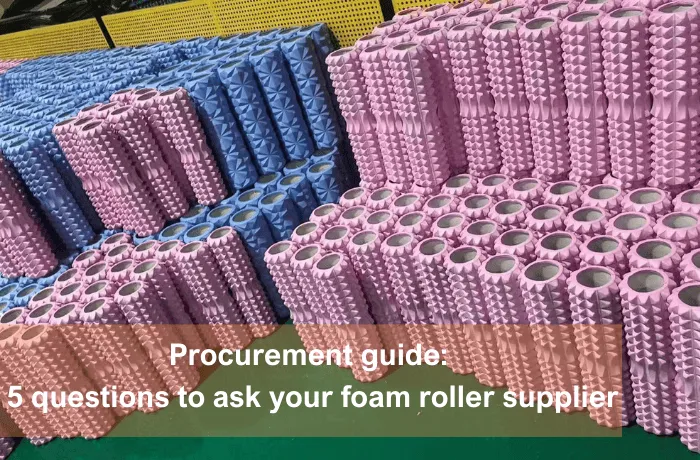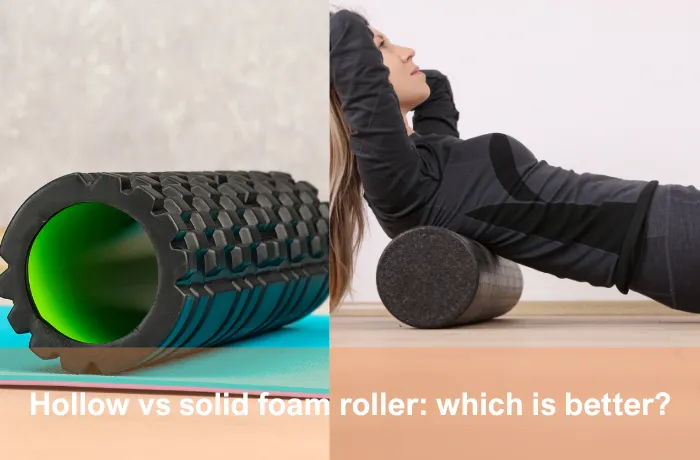You may feel sore muscles after a busy day or hard exercise. Picking a hard massage ball or a soft one is important for comfort and results. A hard massage ball gives strong pressure for deep knots. A soft massage ball feels nicer on sensitive spots. Many people use massage balls to help certain muscles, improve blood flow, and lower stress. You should pick the right massage tool for your pain, body needs, and recovery goals.
Key Takeaways
- Hard massage balls give strong, deep pressure. They help with tough muscle knots and help you recover faster.
- Soft massage balls give a gentle, calming massage. They are good for sensitive muscles and people who are just starting.
- Pick a massage ball that feels right for you. Think about your comfort, how much pain you can handle, and what you want from the massage.
- If you are new to self-massage or have sore spots, start with a soft massage ball.
- Use hard massage balls for deep tissue work on big muscles. These muscles include your calves, glutes, and back.
- Do not use massage balls on bones, joints, or hurt areas. This helps you avoid pain or getting hurt.
- You can use both types together. Warm up with a soft ball, then use a hard ball on tight spots.
- Pay attention to your body. Stop if you feel sharp pain. Change the pressure or ball type if you need to.
Key Differences
Quick Overview
You may wonder what sets hard and soft massage balls apart. The main differences come from their materials, how firm they feel, and the type of massage they deliver. Here is a quick table to help you see the contrasts:
| Feature | Hard Massage Balls | Soft Massage Balls |
|---|---|---|
| Primary Materials | Dense rubber, hard plastic, certain woods | Foam, silicone with lower durometer, gel |
| Density/Firmness | High density and firmness, minimal compression under pressure | Lower density, deformable under pressure, softer feel |
| Massage Effect | Firm and intense massage | Gentle and cushioned massage |
Hard massage balls use dense rubber or hard plastic. These balls do not compress much when you press on them. They give a strong, deep massage that targets tight spots in your muscles. Soft massage balls use foam or soft silicone. These balls feel squishy and gentle. They give a light massage that feels soothing and relaxing.
Which to Choose?
You should think about your comfort, your goals, and how your body feels before picking a massage ball. Many people who are new to self-massage or have sensitive muscles like soft massage balls. These balls work well if you want to relax, ease muscle tension, or help sore spots without pain. Soft balls also fit well along your spine or shoulder blades, where you may feel more sensitive.
If you want a deeper massage, you may prefer a hard massage ball. Athletes and people with tight muscles often choose these balls. Hard balls press deep into your muscles and help break up knots. They work best if you want to improve muscle recovery or target stubborn areas.
Tip: Start with a soft massage ball if you are unsure. You can always try a harder ball later as your body gets used to the pressure.
User preferences often depend on comfort and the effect you want. Soft massage balls feel gentle and help you relax. Hard massage balls give a stronger massage and help with muscle recovery. You should listen to your body and pick the ball that matches your needs.
Hard Massage Ball
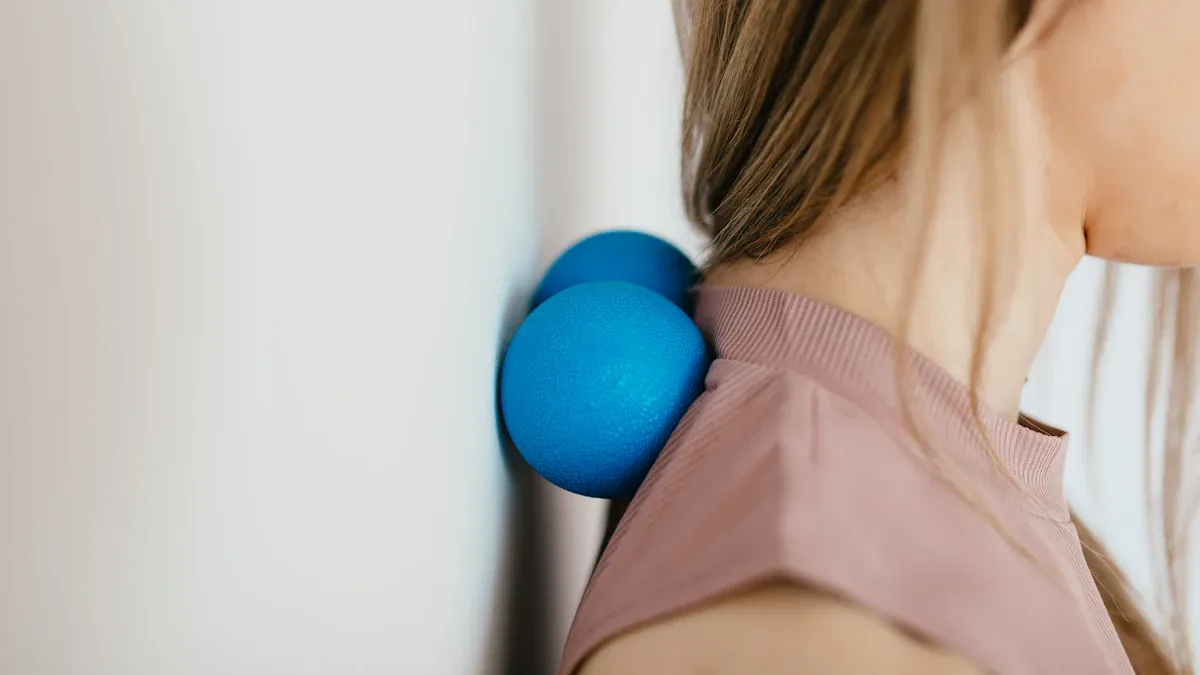
Features
A hard massage ball is known for being solid and firm. These balls are usually made from rubber, silicone, or plastic. Each material makes the ball feel a little different. Rubber balls bend a bit and hold onto your skin. Silicone balls are smooth and safe for most people. They keep their shape even after many uses. Plastic balls can be very hard or a little soft. It depends on the kind of plastic. Some hard massage balls have bumps or rough spots. These help you reach deep into your muscles.
Here is a table to help you compare the most popular materials:
| Material | Typical Characteristics | Advantages | Disadvantages |
|---|---|---|---|
| Rubber | Flexible, durable, comfortable grip | Fits your body, good for deep tissue massage | Might crack or wear out over time |
| Silicone | Non-toxic, hypoallergenic, highly durable, smooth texture | Lasts long, keeps shape, good for sensitive skin | Can feel slippery during massage |
| Plastic | Varies from hard to soft, cost-effective | Strong, keeps shape, not expensive | Softer plastics do not last as long |
You can use a hard massage ball on the floor or against a wall. You can even use it while sitting in a chair. The ball does not squish much when you press on it. This means it gives strong pressure to your muscles. Many people like hard massage balls for deep tissue massage. They also use them to work out tough knots.
Benefits
Hard massage balls help you focus on sore spots and knots. They let you press right where you need it most. Many people use them for trigger point therapy. This means you press on tight spots to help them relax. Hard massage balls can help blood move better in your muscles. This may help your muscles heal faster and hurt less.
Some people say using a hard massage ball helps them move better. They also feel less stiff. You can use these balls on big muscles like your glutes, hamstrings, calves, and upper back. Physical therapists often tell people to use hard massage balls for these areas. These balls can handle deep pressure. You might also feel better if you have muscle cramps or spasms. Some people use them for pain from plantar fasciitis.
Tip: Hard massage balls are small and easy to carry. You can use them at home, at the gym, or at work for quick help.
Drawbacks
Hard massage balls have some downsides you should know. The strong pressure can hurt if you are new to self-massage. It can also hurt if your muscles are sensitive. Pressing too hard or too long on one spot can cause bruises or make your skin sore. Some people feel sore after using a hard massage ball, especially if they push too hard.
Do not use hard massage balls on bones or joints. They work best on big, thick muscles. If you have an injury or very sensitive skin, try a softer ball first. Always pay attention to how your body feels. Stop if you feel sharp pain.
Best Uses
You can use hard massage balls in many ways to help your body feel better. These tools work best when you want a strong massage that targets deep muscle knots. If you have tight muscles after sports or a long day, a hard massage ball can help you relax and recover.
Here are some of the best uses for hard massage balls:
- Deep Tissue Massage
You can use a hard massage ball to press into thick muscles like your glutes, hamstrings, or calves. This type of massage helps break up knots and tight spots that cause pain. Many athletes use hard massage balls to keep their muscles loose and ready for action. - Trigger Point Therapy
If you find a sore spot in your muscle, you can place a hard massage ball on it and press gently. Hold the pressure for 30 to 60 seconds. This helps the muscle relax and can reduce pain over time. You may notice better movement and less stiffness after using this method. - Foot Massage for Plantar Fasciitis
Hard massage balls work well for sore feet. You can roll your foot over the ball to massage the bottom of your foot. This can help if you have plantar fasciitis or just tired feet from standing all day. - Back and Shoulder Relief
You can use hard massage balls against a wall or on the floor to target your upper back and shoulders. Place the ball between your body and the wall, then move slowly to massage tight muscles. This method works well for people who sit at a desk or carry heavy bags. - Pre-Workout and Post-Workout Recovery\
Many people use hard massage balls before exercise to warm up their muscles. You can also use them after a workout to help your muscles recover faster. This can lower your risk of injury and help you feel less sore the next day.
Tip: Always start with gentle pressure when using hard massage balls. Increase the pressure slowly as your muscles get used to the massage. Listen to your body and stop if you feel sharp pain.
You should avoid using a hard massage ball on your joints or bones. Focus on large muscle groups for the best results. If you have a medical condition or injury, talk to a doctor before starting a new massage routine.
Hard massage balls give you control over your massage. You can use them at home, at the gym, or even at work. They fit easily in a bag, so you can take them anywhere. With regular use, you may notice less muscle pain and better movement.
Soft Massage Ball

Features
A soft massage ball feels squishy and gentle when you press it. These balls use materials like medical-grade silicone, rubber, cork, or special foams. Some soft massage balls can be filled with air. You can make them firmer or softer by adding or letting out air. Others are made from rubber or foam that stays soft. These materials make the ball bend easily and fit in your hand. Most soft massage balls have a smooth outside. Some have a little texture for extra comfort.
Here is a table that shows the materials and what they do:
| Material Type | Construction Method | Characteristics and Uses |
|---|---|---|
| Medical-grade Silicone | Crafted for softness and flexibility | Soft, flexible, hypoallergenic, easy to clean; great for gentle massage and sensitive skin |
| Natural/Synthetic Rubber | Molded for durability and elasticity | Good grip, water-resistant, durable; works well for gentle pressure and broad coverage |
| Cork | Made from natural cork | Lightweight, eco-friendly, odor-resistant; offers controlled, targeted massage |
| Bio-based Foams (EVA, PE) | Produced as foam balls | Comfortable, hygienic, easy to clean; best for small muscle groups and gentle compression |
You can use a soft massage ball on many body parts. The ball shapes itself to your muscles and feels nice. This makes it good for people who want a light massage.
Benefits
Soft massage balls have many good points. They help you relax by letting your muscles loosen up. These balls work well on places like your neck, hips, or upper back. A soft massage ball gives gentle pressure and helps you feel calm. It is a good choice if you are new to self-massage or do not like strong pressure.
Studies show soft massage balls can lower muscle tension and pain. You may feel less pain than with a hard ball. The soft ball presses into your muscles but does not hurt. This is great for people who want to avoid soreness. You can use soft massage balls for myofascial release and trigger point therapy. They help you find tight spots and get better blood flow. Many people breathe slowly while using a soft massage ball to relax more and get better results.
Tip: Take slow, deep breaths while rolling a soft massage ball. This helps your body relax and lets the ball work better.
Drawbacks
Soft massage balls have some downsides. They do not push deep into your muscles like hard balls. If you want a strong massage, a soft ball may not work well. These balls can wear out faster if you use them a lot or press hard. Some soft massage balls lose their shape over time.
Soft massage balls work best on bigger or more sensitive areas. They may not give enough pressure for thick, tight muscles like your calves or glutes if you need deep relief. Always check your ball for damage before you use it. Replace it if it gets too soft or changes shape.
Best Uses
You can use a soft massage ball in many ways to help your body feel better. Soft massage balls work well for people who want a gentle massage. If you have sensitive muscles or areas that hurt easily, you may find these balls very helpful. You can use them at home, at work, or even while traveling.
Here are some of the best uses for soft massage balls:
- Gentle Muscle Relief
You can roll a soft massage ball over sore muscles. This helps you relax and can ease pain. Many people use soft massage balls on their neck, shoulders, or lower back. These areas often feel tight after sitting or working for a long time. - Sensitive Areas
Soft massage balls work well on places that feel tender. You can use them on your hips, chest, or along your spine. The soft surface will not hurt your skin or muscles. If you bruise easily, a soft massage ball gives you a safe way to get relief. - Daily Stress Relief
You can use soft massage balls to help with relaxation. Rolling the ball under your feet or hands can calm your nerves. This is a good way to unwind after a busy day. Many people use soft massage balls before bed to help them sleep better. - Improving Blood Circulation
When you use a soft massage ball, you help your blood move better. This can make your muscles feel warm and healthy. Good blood circulation helps your body heal and recover from small injuries. - Gentle Myofascial Release
You can use soft massage balls for myofascial release. This means you press the ball into tight spots to help your muscles loosen up. You do not need to press hard. The soft ball will do the work for you. - Warm-Up and Cool-Down
Before you exercise, you can use a soft massage ball to warm up your muscles. After you finish, you can use it again to help your muscles relax. This can lower your risk of injury and help you recover faster.
Tip: Always start slow when you use a soft massage ball. Move the ball in small circles or back and forth. If you feel pain, stop right away. Listen to your body and use light pressure, especially if you are new to massage.
Soft massage balls are safe for most people. Children, seniors, and people with health problems can use them. If you have a serious injury or health issue, talk to your doctor before starting any new massage routine. You can use soft massage balls every day for the best results. They are easy to clean and carry, so you can use them anywhere you need relief.
Comparison
Benefits Side by Side
You might wonder how soft and hard massage balls help. Both types help your muscles feel better, but they do it in different ways. Here is a table that shows their main benefits next to each other:
| Aspect | Soft Massage Balls | Hard Massage Balls |
|---|---|---|
| Benefits | Gentle muscle relief, improves blood circulation, versatile application, reduces stress | Targeted muscle release, ideal for deep tissue massage, scar tissue reduction, advanced muscle recovery |
| Massage Experience | Provides a relaxing, calming effect | Provides a deeper, more intense massage targeting specific muscle tension |
| Usage Techniques | Apply gentle pressure, roll slowly, start with shorter sessions | Apply direct pressure on trigger points, hold for 20-30 seconds, use body weight or hands for intensity control |
Soft massage balls are good for relaxing your muscles. You can use them every day to help with stress or sore spots. These balls are nice if you want better blood flow and less muscle tightness without pain. Hard massage balls give a stronger massage. They work well for deep knots and tough spots. You can use them after hard workouts or to help break up scar tissue. Both types help you move better and feel good after exercise.
Tip: Try using both kinds of massage balls. Start with a soft massage ball to warm up. Then use a hard massage ball for deeper muscle work.
Drawbacks Side by Side
When you look at soft and hard massage balls, you will see some problems with each one. Knowing these can help you pick the right ball for you.
- Soft massage balls might not press deep enough for tight muscles. If you want a strong massage, you may not feel much better. These balls can wear out faster if you use them a lot or push hard. Some people say soft massage balls do not give clear feedback, so it can be hard to keep up with your routine.
- Hard massage balls can feel too strong, especially if you are new to massage. You might feel sore or get a bruise if you press too hard. These balls are not good for sensitive spots or if you have an injury. You should not use them on bones or joints.
Studies show both types help with sore muscles and recovery. But neither one is always better for everyone. Some studies found no big difference for things like plantar fasciitis. Both are safe, but you should listen to your body and change how you use them if needed.
Ideal Users
You might ask who should use soft or hard massage balls. The answer depends on what feels good, your goals, and your massage experience.
Experts say to start with soft massage balls. These are best if you are new to massage, have sore muscles, or want a gentle way to relax. You can use them on sore or hurt spots with little risk. When you get used to massage, you might want to try hard massage balls. These are good for tough knots, deep muscle work, or after hard exercise.
Athletes, people who work out, and anyone with tight muscles use massage balls. There is no rule about who should use which type. Pick the ball that feels best for your body and needs. If your muscles are healthy and flexible, you might like the deep pressure from hard massage balls. If your muscles are sore or hurt, soft massage balls are safer.
Note: Always start with light pressure and add more as your body gets used to it. Your comfort and safety are most important.
Use Cases
You can use massage balls in many ways to help your body feel better. Each type of ball works best in certain situations. Knowing when to use a hard or soft massage ball helps you get the most out of your self-care routine.
Everyday Relief at Home
- You can use a soft massage ball to relax after a long day. Roll it under your feet while you watch TV. This helps your feet feel less tired.
- Try a hard massage ball on your upper back if you feel tight from sitting at a desk. Place the ball between your back and the wall. Move slowly to work out knots.
Sports and Fitness Recovery
- After a workout, you may want to use a hard massage ball on your calves or glutes. This helps break up tight spots and speeds up recovery.
- Use a soft massage ball before exercise to warm up your muscles. This prepares your body for movement and lowers the risk of injury.
Office and Desk Work
- If you sit for many hours, your shoulders and neck can get stiff. A soft massage ball works well for gentle relief in these areas.
- For deep tension in your lower back, a hard massage ball can target the muscles that feel tight from sitting.
Sensitive or Injured Areas
- If you have sore spots or sensitive skin, choose a soft massage ball. It gives gentle pressure and helps you relax without pain.
- Avoid using a hard massage ball on injuries or bruises. Use it only on healthy muscle tissue.
Table: Choosing the Right Massage Ball for Your Needs
| Situation | Best Ball Type | How to Use It |
|---|---|---|
| Sore feet after standing | Soft massage ball | Roll under feet for 5-10 minutes |
| Tight glutes after running | Hard massage ball | Sit on ball, roll slowly to find tight spots |
| Neck tension from computer work | Soft massage ball | Gently roll along neck and shoulders |
| Deep knots in upper back | Hard massage ball | Press ball against wall, move back and forth |
| Sensitive or bruised areas | Soft massage ball | Use light pressure, avoid pain |
Tip: Always listen to your body during a massage session. If you feel sharp pain, stop right away and switch to a softer ball or lighter pressure.
You can mix both types of massage balls in your routine. Start with a soft massage ball to relax your muscles. Then use a hard massage ball for deeper work on tough knots. This way, you get the benefits of both gentle and strong massage.
How to Use?
Safety Tips
When you use a massage ball, you want to keep your body safe. Health professionals share some important tips to help you avoid injury:
- Start with gentle pressure. Increase it slowly as your body gets used to the massage.
- Do not use the ball on areas that are inflamed or injured. This can make things worse.
- Avoid pressing too hard, especially if you are new to self-massage. Too much pressure can cause pain or bruising.
- Use the massage ball on a soft surface, like a yoga mat, to lower the risk of injury.
- Take breaks between sessions. This helps prevent overstimulation of your muscles.
- If you have a medical condition or injury, talk to your doctor before you start.
- Keep the massage ball clean. Wash it often to protect your skin from germs.
- Avoid direct pressure on your spine or joints. These areas are sensitive and can get hurt easily.
Tip: Listen to your body. If you feel sharp pain, stop right away.
Techniques
You can use different techniques to get the most out of your massage ball. Physical therapy experts suggest these methods:
- Use softer balls for small or sensitive muscles, like your neck, jaw, or hips. Harder balls work better for big muscles, such as your glutes or calves.
- Begin with light pressure. Roll the ball slowly to find tight or sore spots.
- For better range of motion, hold steady pressure on a tight area for about 60 seconds. A ball with a tennis ball’s firmness works well for this.
- For relaxation, use a larger or softer ball. Move it in long, slow strokes to help your muscles relax.
- Do not push so hard that you feel real pain. You should feel some discomfort, but you should still be able to breathe easily.
- Try using two connected balls to support both sides of your spine at once. This works well for your upper back.
- Spend about five minutes on each area. You can repeat this two to four times a week if you do not feel sore.
- Focus on slow breathing while you use the ball. This helps your muscles relax even more.
Areas to Avoid
Some parts of your body are not safe for massage ball use. You should avoid these areas to protect your nerves, arteries, and bones:
- Do not press directly on bones, joints, or your spine.
- Stay away from the inner upper thigh (groin), back of the knee, elbow’s funny bone, inner wrist, collarbone, and armpit.
- Avoid the center of your chest and the heel bone on your foot.
- These spots do not have enough muscle to protect them. Pressing here can cause pain or injury.
You should use the massage ball on large muscle groups, like your upper back (but not the spine), glutes, quads, hamstrings, calves, forearms, shoulders, and feet. Always move slowly and check how your body feels.
Note: Protect your body by using the ball only on safe areas with good muscle coverage.
Choosing Tips
Assessing Needs
When you start looking for a massage ball, you need to think about your personal needs. Everyone’s body is different. You may want a gentle massage, or you may need deep pressure for tight muscles. Experts suggest you look at your experience, muscle sensitivity, and what you want from your massage.
- Soft massage balls work well for beginners. They give gentle pressure and help if you are recovering from an injury or have low pain tolerance.
- These balls fit around body curves, so they are good for areas with bones that stick out, like your spine or shoulder blades.
- Soft balls help you relax, lower stress, and improve blood flow without causing pain.
- Hard massage balls use dense materials. They give a strong, deep massage. If you have chronic pain, stubborn knots, or want to break up scar tissue, a hard ball may help.
- Hard balls can improve muscle flexibility and help with deep tissue needs.
You should decide if you want a relaxing massage or a strong, targeted treatment. This will help you in making the right choice for your body.
Here is a table to help you compare:
| Criteria / User Need | Soft Massage Balls | Hard Massage Balls |
|---|---|---|
| Experience with self-massage | Good for beginners | Better for experienced users |
| Muscle sensitivity | Best for sensitive muscles or injuries | Best for deep muscle release |
| Stubborn knots | Gentle relief | Intense pressure for tough knots |
| Pain tolerance | Low pain tolerance | High pain tolerance |
| Recovery goals | Relaxation, gentle relief, better blood flow | Deep tissue, scar tissue, chronic pain, muscle recovery |
| Areas with protruding bones | Flexible, fits around bones | More precise, less flexible |
| Massage effect desired | Gentle, relaxing | Intense, deep tissue |
Tip: Think about your goals before you pick a massage ball. Your needs may change over time, so you can try different types as you learn what works best.
Pain Tolerance
Your pain tolerance plays a big role in picking the right massage ball. If you feel pain easily or have sensitive muscles, start with a soft massage ball. This type gives gentle pressure and helps you relax without discomfort. You can use it every day, even if you are new to self-massage.
If you have a higher pain tolerance, you might want a hard massage ball. This ball gives strong, deep pressure. It works well for breaking up tough knots or helping with chronic pain. Some people use hard balls for trigger point therapy or after hard workouts. Always listen to your body. If you feel sharp pain, stop and switch to a softer ball.
Note: You should never push through sharp or lasting pain. A good massage should feel helpful, not harmful.
Body Area
Different body parts need different types of massage balls. The size, firmness, and texture of the ball can change how it feels on your muscles.
- For your feet, hands, or forearms, use a small massage ball. Soft balls work well for sensitive skin. Hard balls help if you want deep pressure.
- For your calves, hamstrings, or glutes, use a medium-sized ball. Firmer balls work best for healthy muscles. Softer balls are better for sore or injured areas.
- For your back, shoulders, or chest, try a larger ball. Smooth balls give a gentle massage. Spiky balls give a deeper, more intense massage.
| Body Area / Muscle Group | Recommended Ball Size | Material & Firmness Considerations | Texture Recommendation |
|---|---|---|---|
| Hands, Forearms, Feet | Small (about 2 in / 5 cm) | Soft for sensitive skin, firm for healthy tissue | Smooth for gentle, spiky for deep work |
| Butt, Calves, Hamstrings, Back, Shoulders, Chest, Neck | Medium (about 2.5 in / 6.5 cm) | Firm for healthy muscles, soft for sore or injured areas | Smooth for gentle, spiky for intense |
Tip: Smaller balls target small muscles. Larger balls cover bigger areas. Choose the ball that matches the muscle group you want to massage.
Trying Options
You may not know which massage ball feels best until you try a few. Every person’s body reacts differently. You can test different types to find what works for you. Many stores let you touch or squeeze the balls before you buy. Some gyms or physical therapy clinics have both hard and soft massage balls. You can ask to try them out during a session.
Start by picking up a soft massage ball. Squeeze it in your hand. Notice how much it gives under pressure. Roll it under your foot or along your arm. Pay attention to how your muscles feel. If you want more pressure, try a harder ball. Press it against a wall or the floor. See if the deeper pressure feels good or if it causes discomfort.
Tip: Bring a friend or family member when you shop for massage tools. They can help you test the balls and give feedback.
You can also order a small set of massage balls online. Many sets include both hard and soft options. This way, you can try each one at home. Use each ball on different muscle groups. For example, use a soft ball on your neck and a hard ball on your calves. Keep track of which ball helps you relax and which one helps with tight spots.
Here is a simple way to test your options:
- Choose a muscle group, like your shoulders or feet.
- Use the soft massage ball first. Roll it gently for two minutes.
- Notice how your muscles feel. Do you feel relaxed or do you need more pressure?
- Switch to the hard massage ball. Roll it in the same area for two minutes.
- Compare the feeling. Which ball gives you the relief you want?
You can make a table to record your results:
| Muscle Group | Soft Ball Feeling | Hard Ball Feeling | Preference |
|---|---|---|---|
| Neck | Relaxing | Too strong | Soft |
| Calves | Not enough | Deep relief | Hard |
| Feet | Gentle | Firm | Both |
Trying different massage balls helps you learn what your body likes. You may find that you need both types for different days or muscle groups. Your needs can change over time. Keep testing and listening to your body. You will become better at choosing the right massage tool for every situation.
Real-Life Scenarios
Office Workers
If you sit at a desk for hours, your shoulders and neck can get tight. Your hands might also feel sore. A massage ball can help with these problems. You can roll a soft ball under your feet while working. This helps your muscles relax and gets your blood moving. Many people press a massage ball against a wall to use it on their upper back or shoulders. This can help loosen knots and ease tension from sitting too long.
You can also use a massage ball on your forearms if you type a lot. Rolling the ball gently over your arms can help with tightness and stop pain. Some people feel less stressed and can focus better after a short massage at their desk. Massage balls are small, so you can keep one in your bag or drawer for quick use.
Tip: Try using a massage ball on your hands, feet, or shoulders for a few minutes each day. This small habit can help you feel better at work.
Athletes
Athletes train hard and push their bodies. They use both hard and soft massage balls to help their muscles recover. Studies show these tools can lower soreness, help you stretch, and let you move better. A hard massage ball works well for deep knots in your calves or glutes after a workout. A soft massage ball is good for warming up or for sore spots.
Here is a table showing how athletes use massage balls for recovery:
| Tool Type | Typical Use | Benefits for Athletes |
|---|---|---|
| Hard Massage Ball | Deep tissue release | Reduces soreness, targets tight spots |
| Soft Massage Ball | Gentle warm-up, cool-down | Improves flexibility, soothes muscles |
You can use these tools by yourself, so they are easy to add to your daily routine. Many athletes say massage balls help them get ready for the next workout and help their muscles heal.
Seniors
As people get older, their muscles and joints can feel stiff or sore. Soft massage balls give a gentle way to help with comfort and movement. Studies show using a soft ball before stretching can help you move better and feel stronger. This can help you keep your balance and avoid falls. Many seniors find that a soft massage ball helps their muscles relax and lets them move more.
- Soft massage balls are safe for thin or sensitive skin.
- You can use them to relax tight muscles and ease myofascial tension.
- Gentle massage helps you stay active and independent.
Experts say soft massage balls are good for seniors because they do not cause bruises. You can use them at home to help you move and feel better every day. Many people feel less pain and can move their joints more after using them often.
Note: Always start with light pressure and check your skin for any changes. If you have health concerns, talk to your doctor before starting a new massage routine.
General Wellness
You do not need to be an athlete or have an injury to enjoy the benefits of massage balls. Many people use these tools for general wellness. You can add massage to your daily routine to help your body feel better and stay healthy.
Massage balls help you take care of your muscles at home. You can use them in the morning to wake up your body. You can also use them at night to help you wind down. Rolling a massage ball on your feet or back can help you feel calm. This simple action promotes relaxation and helps you let go of stress from your day.
Here are some ways you can use massage balls for general wellness:
- Roll a massage ball under your feet while you read or watch TV. This can help your feet feel less tired.
- Use a soft massage ball on your neck or shoulders after a long day. This can help you relax and sleep better.
- Try a hard massage ball on your back or legs after exercise. This can help your muscles recover and feel less sore.
- Keep a massage ball at your desk. Use it on your hands or forearms during breaks to keep your muscles loose.
You can use massage balls almost anywhere. They fit in your bag or drawer. You do not need special skills to use them. Just start with gentle pressure and listen to your body.
Many people say that regular massage helps them feel happier and more focused. You may notice that your mood improves after a short session. Massage also helps your blood move better. Good blood flow keeps your muscles healthy and strong.
Tip: Make massage part of your self-care routine. Even five minutes a day can make a big difference in how you feel.
Massage balls offer a simple way to care for your body. They support your health and wellness goals. You can use them for relaxation, stress relief, and muscle care. Try different types to see what works best for you.
You now know the main differences between hard and soft massage balls. Hard balls give deep pressure for tough knots, while soft balls offer gentle relief for sensitive areas. Think about your comfort and what you want from your massage. Choose the ball that fits your needs best. Try both types to see which one helps your muscles most. If you need advice, ask a health professional about the right massage tool for you.
FAQ
What is the main difference between hard and soft massage balls?
You will notice that hard massage balls give deep, strong pressure. Soft massage balls feel gentle and cushion your muscles. Hard balls work best for tough knots. Soft balls help with sensitive or sore areas.
Can you use both types of massage balls in one routine?
Yes, you can use both. Start with a soft ball to warm up your muscles. Switch to a hard ball for deeper work on tight spots. This method helps you get the benefits of both.
Are massage balls safe for children and seniors?
Massage balls are safe for most children and seniors. You should choose soft balls for gentle pressure. Always watch for pain or skin changes. Ask a doctor if you have health concerns.
How often should you use a massage ball?
You can use a massage ball daily for short sessions. Most people start with five to ten minutes per area. Listen to your body. Stop if you feel pain or discomfort.
Can massage balls help with plantar fasciitis?
Yes, massage balls can help. Roll the ball under your foot for a few minutes each day. This can ease pain and improve blood flow. Soft balls work well for sensitive feet.
Should you use a massage ball on bare skin or over clothes?
You can use a massage ball on bare skin or over thin clothes. Bare skin gives more feedback. Clothes can protect sensitive skin. Try both ways to see what feels best for you.
How do you clean a massage ball?
You should wash your massage ball with mild soap and water. Dry it with a towel. Clean it often, especially after each use, to keep it safe and hygienic.
What should you do if you feel pain during massage?
Stop right away if you feel sharp pain. Switch to a softer ball or use less pressure. Pain means your body needs a break. Always listen to your body’s signals.

